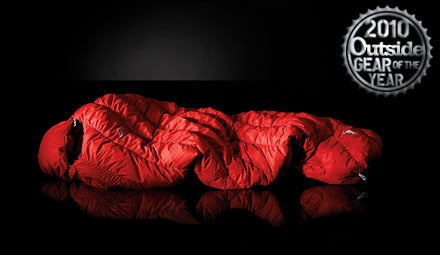“Not just different. Better.” That tester’s observation sums up this 15-degree bag from Montbell, whose major tech innovation—spiraled baffles—made it the most comfortable and best-functioning bag we tested this year. Far from a gimmick, the spiral baffles drape more evenly over the body, creating a closer fit. And because the seams are sewn with elastic thread, the bag literally hugs the luxurious, top-shelf 800-fill down insulation to your body at rest, and expands by up to 20 percent when you move around. We could actually sit up and cross our legs inside it—a boon for restless sleepers. Another benefit of the diagonal construction is that the baffles are longer, meaning fewer seams to let heat out. All this in a tiny package: The gossamer-light 12-denier fabric and high-grade down make for a bag that packs to the size of a bread loaf. 2.3 lbs;
Compressibility: 4.6 (out of 5)
Warmth-to-Weight: 4.5
$379
Patagonia Drifter A/C Trail Shoe
Patagonia Drifter A/C Trail Shoe
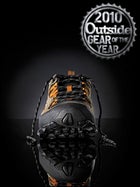
As this year’s test began to wind down, one fact became glaringly apparent: The Drifter had accumulated the most mileage. It excelled on 90 percent of our trail adventures—from mellow afternoon outings to weekend backpack trips (with loads up to 25 pounds) and every ramble in between. Stiff sole to push up steep ascents? Check. A toothy Vibram tread that stuck to everything from loose scree to slick rocks? Yup. The break-in period was (almost) instantaneous, thanks in large part to generous ankle and heel padding. And throughout it all, dry feet. The “A/C” stands for air-conditioned, and the breathable fabric panels lived up to their billing. Note: If you most often hike in soggier climes, consider the waterproof Gore-Tex version ($140). 16.8 oz;
Support: 4.5 (out of 5)
Comfort: 5
$110
REI Half Dome 2+ Tent
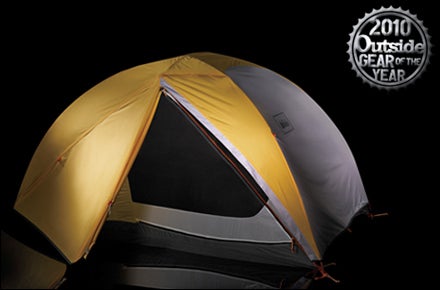
We’ve tested plenty of tents for under $180, but none held up like the REI Half Dome 2. The redesigned classic two-man is a third larger—and considerably sturdier—than the previous iteration and includes both multiple doors and a vestibule. Instead of crossing, the twin main poles run parallel, which saves a few segments (and ounces) and makes the walls more vertical. It’s a bit awkward to set up for the first time but easy with a little practice. Other smart touches include vents on the fly that kept testers condensation-free in fog and rain on Oregon’s Rogue River, pockets to stuff the opened canopy doors into (saving the hassle of lashing them aside), and an “attic” to dry socks or hold a headlamp for overhead lighting. “It’d be a good tent at any price,” one tester summarized, “but it’s an incredible tent at this price.” 5 lbs,
Livability: 4.4 (out of 5)
Sturdiness: 4.5
$179
Black Diamond Infinity 50 Backpack
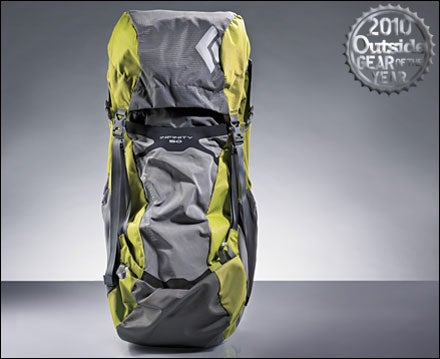
When it comes to comfortably carrying big loads, it really is all about the hips. And while Black Diamond isn’t the first company to attach the hipbelt to the frame via a ball joint, BD does it better than anyone else. Unlike traditional waist belts, the 3,050-cubic-inch Infinity’s actually pivots, allowing the pack to hug your back and balance the load. OK, OK, the shoulders matter, too: Because the Infinity’s innovative shoulder straps are connected by a low-friction cable that runs through the bottom of the pack, they’re able to continuously change lengths as you swing your arms and stride down the trail. And then there are all the user-friendly features like retractable trekking-pole loops and removable sleeping-pad straps. The only caveat: Adjusting the suspension requires an Allen wrench (included), which some testers worried could get lost on the trail. 3.9 lbs;
Versatility: 4.8 (out of 5)
Comfort: 4.8
$200
Marmot Super Mica Hard Shell Jacket
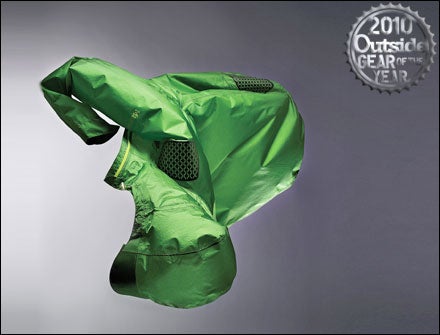
We knew we had an exceptional waterproof-breathable jacket on our hands when, after field-testing the Super Mica for five months, one of our most jaded reviewers reported, “It’s the best backcountry shell I’ve ever worn.” The reason is pretty simple. Normally, ultralight jackets like the Super Mica save weight by forgoing userfriendly features. But Marmot has somehow managed to cram in just about everything you need in a storm shell—from a wire-stiffened brim to gaping pit zips to two big chest pockets—without hitting nine ounces. The fabric is key here. Marmot’s 30-denier house-brand stuff is remarkably tough for how thin it is (it packs down to the size of a PB&J) and affords stout protection from the elements. Plus, at high-wear areas at the shoulders and hips, the jacket is reinforced with thin strips of laser-cut seam tape. Add it all up, as one tester summarized, and you’ve got “everything you want in a jacket.” 8.3 oz;
Breathability: 4.5 (out of 5)
Packability: 4.9
$200
Emotion Comet Kayak
Emotion Comet Kayak
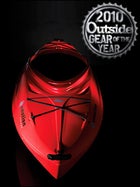
We’ve seen killer prices on Emotion kayaks before, but the Comet pairs that affordability with performance. At eight foot three, it resembles a duckie but tours (and accelerates) like a boat twice the length and six times the price. It’s not surprising, since legendary boatbuilder Jim Snyder, who’s created more than 75 boats in his lifetime, was on the design team. On the water, the Comet wiggles a little for the first couple of strokes but almost immediately straightens out and tracks like an arrow. Plus it’s practically indestructible. (We watched Emotion fill this boat with water, drop it from a forklift, and crush it under a truck—and after both assaults it bounced back unfazed to its original shape.) Adjustable foot pegs let you brace your back against the ample, contoured plastic seat, while front and back deck bungees hold sunscreen or a map. Bonus: An inflatable air bladder in the stern means that even if you flip, the boat will still float. 8’3″, 38 lbs;
Stability: 4.7
Maneuverability: 4.9 (out of 5)
$279
Scott Makani II Road Running Shoes
Scott Makani II Running Shoes
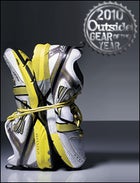
Pass the crow. When we heard Scott, a company better known for ski gear and carbon-fiber bikes, was bringing a line of performance running shoes to the U.S., we were skeptical. Then we tried them. The Makani II was simply the most speed-inspiring and enjoyable shoe in our test. Most shoes this light feel like flimsy racing flats, not trainers. But the Makani has a carbon plate embedded in the midsole that creates structure without bulk, delivering support for low-grade overpronators and fatiguing long runs. “I ran ten miles fast,” said one tester, “and my legs weren’t tired like they’d be in other shoes.” Comfortable? That’s an understatement. The two-piece, socklike upper teams up with a supportive heel cradle for a secure and agile-feeling fit, and the midsole cushioning, though softer in the forefoot than most, felt perfectly balanced—cushy but not squishy, not too flexy but not too firm. 10.1 oz;
Stability: 3.5 (out of 5)
Softness: 3.7
Speed: 5
$110
The North Face Single-Track Trail Running Shoes
The North Face Single-Track Trail Running Shoes
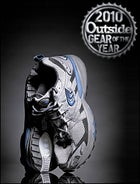
Imagine a shoe that feels right whether you’re running three miles around the park or all day in the mountains. Fantasy? Nope. Everyone on our team—from hardcore ultramarathoners to high-cadence 10K trail racers to casual runners—fell in love with this shoe almost from the beginning. A minimalist upper keeps the weight competitive—and the comfort ranking high—without feeling flimsy, thanks to well-placed overlays. “This shoe hugs my foot better than any others,” said one tester. A form-fitting heel cradle made of firm EVA foam helps stabilize the shoe when you’re barreling down technical trails. “It’s extremely nimble and agile on a variety of terrain,” another tester said. The thin plastic plate under the forefoot offers protection from rocky jabs, and neutral cushioning and good forefoot flexibility allow a smooth turnover, even if you run pavement to get to the trailhead. 11.5 oz;
Traction: 4.8 (out of 5)
Stability: 4.6
Speed: 4.7
$100
Costa Del Mar Fisch Sunglasses
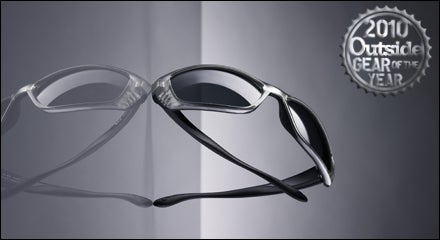
The Fisch is your upgrade to HD reality. Whereas gray-tinted lenses are typically view flatteners, Costa’s optically ground glass 580 lenses are a vibrant exception. These cool-hued wonders had everything popping in sharp-edged detail, made clearer still by polarization, which killed glare. And with no weird color shift, the neutral tone made them quick adjusters for frequent on/off situations. The Fisch’s big, wrap-back lenses kept our eyes protected and provided a safe haven from screaming winds, while offering an unobstructed view side to side, up and down. The springy nylon frames curve in for solid head-hold, and mini vent holes in the frame corners let air in to prevent fogging. Add other sporty design features, like the sticky-when-wet rubber cladding at the nose and along the temples, and this clean-lined workhorse left us looking as good as what we were looking at. The only drawbacks: Glass won’t do for action sports, and the 580 line doesn’t offer prescription lenses.
Value: 4 (out of 5)
Sport/Street Crossover: 5
$229
Osprey Sojourn 25-Inch Rolling Luggage
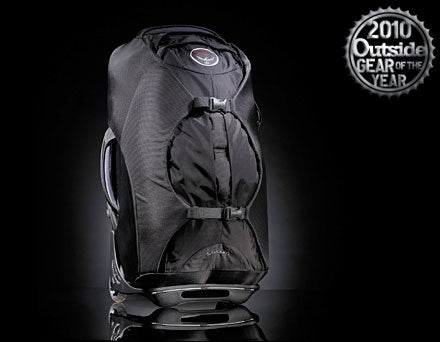
The Sojourn masterfully combines DNA from Osprey’s technical packs with perhaps the most intelligent convertible-luggage design available. The foundation is the company’s High Road Chassis, an amalgam of high-grade aluminum frame, composite base, fiberglass matrix inlay, ergonomic two-position handle, and large, high-traction wheels. During tramps in Alaska, Colorado, and Mexico, testers gushed about how nimble and balanced the Sojourn felt, testament to the Straight Jacket design, which employs foam sidewalls to compress and center the load like an oversize taco. Its zip-away suspension performed like a real backpack, using load-lifter straps and a sprung back panel that conforms to your physique. Inside the drop door you’ve got 3,600 cubic inches, with compression straps, front panel, and side mesh pockets for organization. The multiple haul handles were plush and provided excellent lift points for roof-rack tosses. Quibbles? Nada. 7.6 lbs;
Practicality: 5
Durability: 5
$259
Pentax Optio W90 Point-and-Shoot Camera
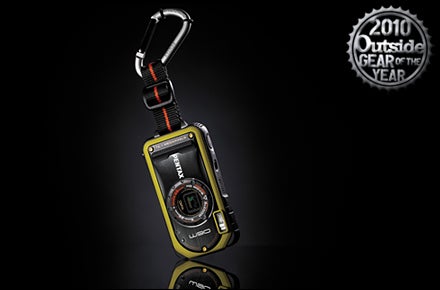
The best camera is the one that’s actually on you when something photo-worthy happens. The W90, with its pack-strap-ready carabiner, not only lives up to that maxim but brings some serious photographic punch when the shooting begins. Pentax upped the waterproof depth of this classic ruggedized line to 20 feet and the safe drop height to four, thanks to a heavy-duty rubber housing and internal reinforcements. Simple flick-and-slide gaskets make the battery and SD memory-card slots easy to get to, while three LEDs provide light for macro subjects as close as half an inch from the lens. Featurewise, the W90 is right in the sweet spot of high-end point-and-shoots: 12 megapixels, a 28–140mm optical zoom, 720p HD video at a rapid-fire 30 frames per second, and a time-lapse feature. In your hand, the W90 feels substantial, with simple thumb controls, and the 2.7-inch LCD screen is easy to see—even through goggles. 5.7 oz;
Features: 3.7 (out of 5)
Value: 4
$330
Google Nexus One Smartphone
Google Nexus One Smart Phone
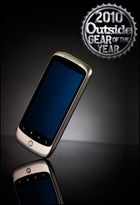
An iPhone clone? Not so fast. This beautiful device (made by HTC) represents the best of smartphone technology. With more irresistible features than you could ever use, the Android operating system also works at lightning speed (thanks to a 1GHz processor), so your capacity for wasting time is curtailed. The 3.7-inch touchscreen—slightly bigger than the iPhone’s and identical to the Motorola Droid’s—seems just right and is a marvel of color and clarity. Touch controls are fast and responsive, and voice commands actually work: You can dictate text messages and Google searches, a boon to road safety once we mastered the technique. It’s got the full suite of Google programs, including the addicting Google Maps with GPS and driving directions, as well as the new Goggles, which takes a picture of something then goes looking on the Web for information about it. It’s also a media master: The 5MP camera shoots above-average photos and has an LED flash and 720 video. It can access 30,000 Android apps. Basically, it’s the perfect toy: One tester’s 80-year-old mother borrowed it and wouldn’t give it back until the next day. $179 with two-year T-Mobile contract; $529 unlocked (for AT&T or T-Mobile);
Functions: 4.9 (out of 5)
Durability: 3
$179
Santa Cruz Blur LT Carbon SPX Mountain Bike
Santa Cruz Blur LT Carbon SPX Mountain Bike
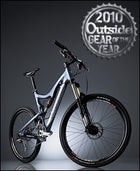
“It climbs like Tommy Caldwell,” said one tester. That’s not normal for 26-inch, all-mountain bikes. With their long suspension travel—five and a half inches, in this case—and relaxed angles, they’re designed to soak up big hits. But this carbon copy of the company’s popular aluminum Blur LT weighs just 26 pounds, even with a mid-tier SPX build (mostly Shimano XT). That plus Santa Cruz’s proprietary rear-suspension design—plush with no perceptible pedal bob—means full-time traction without a constant battle against gravity. Of course, the rubber matters, too, and the wide DT Swiss XR400 rims provide a nice big contact patch for added control. The extra-wide bars, which provide leverage for steep climbs, might slow the steering down just a bit, but that is a minor quibble—and an easily correctable one—for a bike that will be, for a lot of riders, perfect. 25.8 lbs (large);
Climbing: 4.4 (out of 5)
Descending: 4.4
$4,699
Gary Fisher Cronus Road Bike

At some level, you can divide road bikes into two main categories—those built for speed, and those built for comfort. But not the carbon-fiber, race-ready Cronus. It has fender mounts. And that’s essentially why the Cronus won this year. You can slap fenders on it and use it as your all-purpose, around-town-and fitness-riding bike, but it’s also light and agile enough to race on. “Wow! Super-stiff front end,” wrote one tester. “Really confident when cornering.” Credit the tapered headtube and wider-than-average hubs, which combine to produce a beefy front end that simply doesn’t get shoved off its line. Note: Our test bike was equipped with Shimano 105 components and a triple crankset, but the Cronus is also available for the same price with a compact crankset and, at a higher price, with a Tour de France–caliber build. 17.7 lbs (56 cm);
Handling: 4.2 (out of 5)
Responsiveness: 4.3
$2,630








